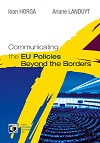European Union Identity’s Borders as Tools for Differentiating Inside-Outside EU’s Policies
European Union Identity’s Borders as Tools for Differentiating Inside-Outside EU’s Policies
Author(s): Alina Ştefania MogoşSubject(s): Politics / Political Sciences
Published by: Editura Universitatii din Oradea
Keywords: EUropean; Identity; border; citizenship; Schengen Agreement
Summary/Abstract: With Schengen Agreements there has been a redefinition of the meanings, roles and functions of EUropean2 borders. One of the most important changes was the creation of a distinction between internal and external borders and the virtual vanishing of the internal ones corroborated with a strengthening of the visibility and role of security instrument of the external ones. Apparently in the last years, one of the major problems the EU faces is the illegal migration and the increased number of refugees crossing EU’s borders in the light of the Arab Spring. These two issues put a lot of pressure on one of EU’s most valued achievements: the free movement of EU citizens inside its frontiers, being brought into discussion the reintroduction on temporarily basis of border control inside EU. At the same time, these issues have the potential to negatively affect EU’s identity outside its borders as the measures taken for protecting its territory might create the image of a EU fortress. Defining the subjects of EU policies is a matter of defining who are its citizens and which are the benefits this identity encompasses. But when it comes to the benefits and the which are the limits that best depict the EUropeaness, there we face another difficulty because inside EU there are overlapping borders that lead inevitably to overlapping identities and which put into difficulty the offering of same benefits to all EU citizens. All these issues arise around the issue of borders and emphasise the importance of this concept both for policies that regard inside and outside EU matters.
Journal: Eurolimes
- Issue Year: 2013
- Issue No: Supplement
- Page Range: 36-51
- Page Count: 15
- Language: English
- Content File-PDF

